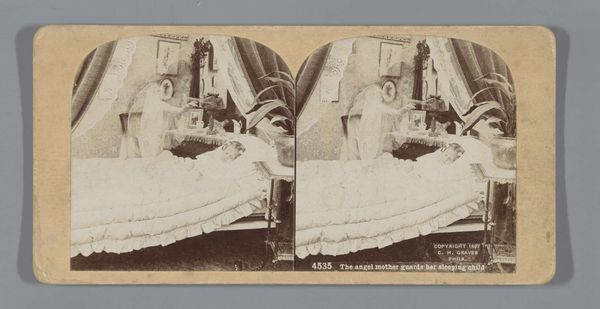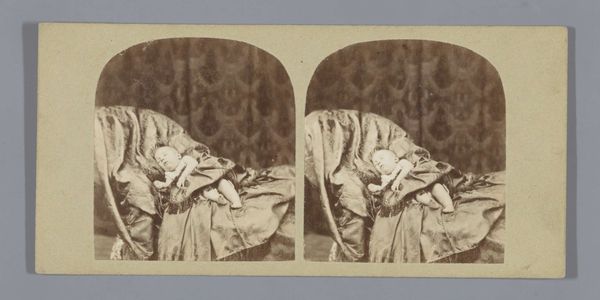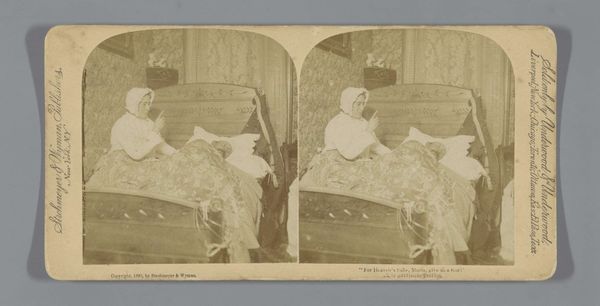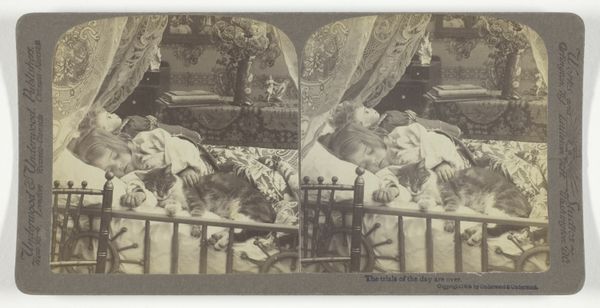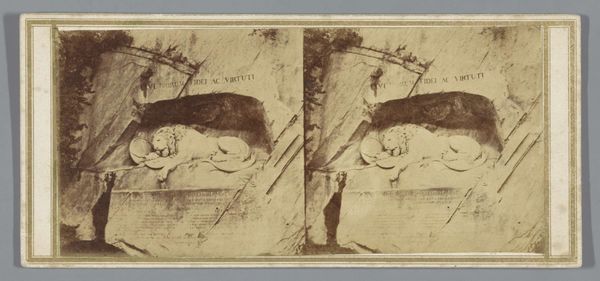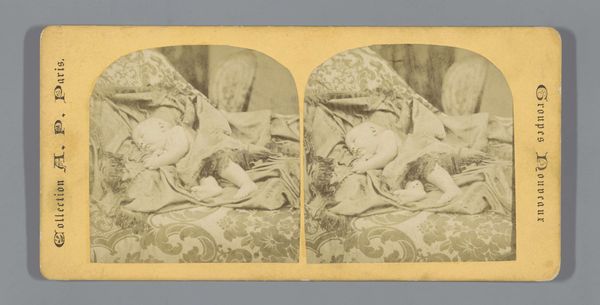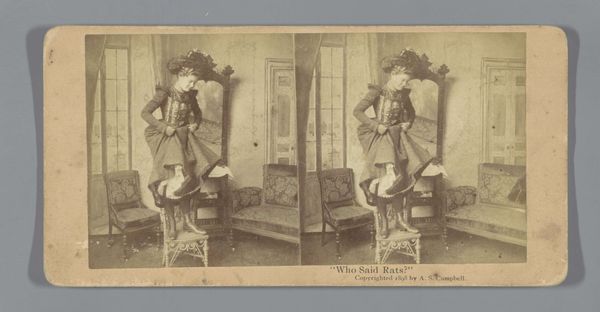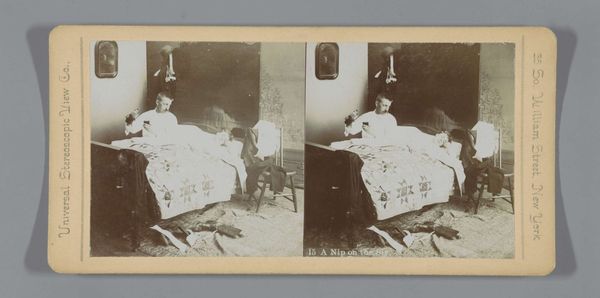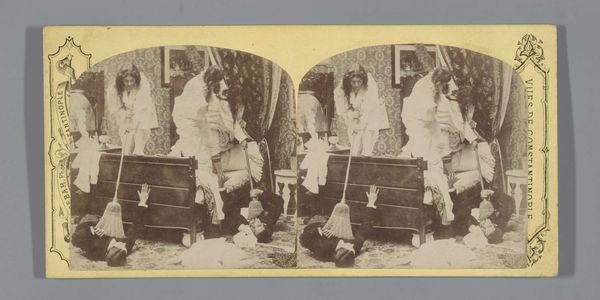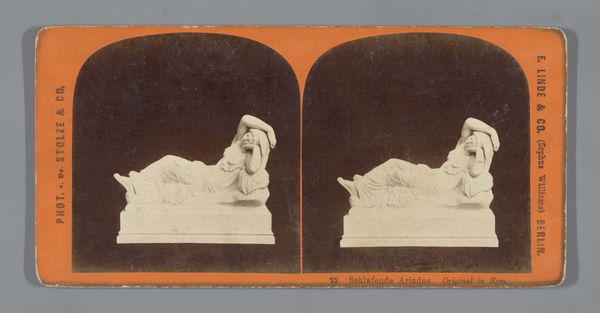
Dimensions: 7.9 × 7.5 cm (each image); 8.8 × 17.8 cm (card)
Copyright: Public Domain
Curator: The dreamlike quality of this image is striking. There’s a tranquility about the composition despite its uncanny subject. Editor: This is "Her Guardian Angel," a stereograph dating to 1894, made by the Keystone View Company. The work exists as a mass-produced image and raises questions about accessibility, distribution, and how the cultural obsession with spiritualism impacts consumption. Curator: A stereograph! So it was intended as a widely accessible form of entertainment, produced using relatively cost-effective printing methods. Were they creating "high art," or engaging in something closer to social commentary? Editor: Given its creation for mass consumption, it straddles the line. Stereographs became extremely popular around this time; they were found in middle-class homes offering a visual spectacle and sense of engagement. Spiritualism was also prevalent, which adds layers of social and political interpretation related to death, grieving, and faith. The photograph reflects these cultural anxieties and trends, capitalizing on both to promote a certain idea about security and protection in a world seemingly dominated by anxiety. Curator: Looking at the process – the chemicals, the printing plates – it makes me wonder about the labor involved in creating and distributing these images on such a wide scale. Were the workers recognized for their contributions, or were they simply cogs in the Keystone machine? Also, the artistic labor needs recognition, such as with models, set designers and more. Editor: Precisely. Examining Keystone's archives and production methods helps unpack this complex dynamic. They became a major player, documenting everything from world events to sentimental domestic scenes, all driven by consumer demand. “Her Guardian Angel” isn’t just about personal faith; it reflects an industry shaping public consciousness. Curator: The way it uses a sort of theatrical staging, with the draping fabric and posing, definitely speaks to image production being deeply tied to consumer appeal, rather than art existing on a solely higher plane. I also want to draw attention to the textures captured; despite the spectral appearance, the softness of the blanket, the girl's hair and face create a compelling, physical presence. Editor: That’s a good reminder to focus on the physical artifact, rather than purely historical interpretation. Thinking of its initial audiences engaging with such mass-produced photographs, really allows me to consider how this technology shaped individual experience and the politics of seeing. Thank you for pointing that out! Curator: It’s always important to reflect and ask such questions of what comes into the institution.
Comments
No comments
Be the first to comment and join the conversation on the ultimate creative platform.
